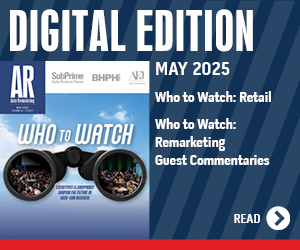AutoLeadStar aims to personalize website engagement

That shopper who steps on to a dealership lot almost certainly has already checked out the store’s website.
The first impression he or she has of the store might be made digitally.
The team at AutoLeadStar has found through looking at various studies that “almost no one these days will walk into a dealership without looking at their website first,” said Ilana Zur, the company’s head of outreach.
“And that’s been a big challenge for dealerships as well, because they actually have to prove themselves online first, and they lose that personal touch,” she said in a July phone interview.
And a challenge spotted by AutoLeadStar — a company that offers specialized auto website engagement and lead capture technology — is that a website tends to have to be a “jack of all trades,” says Aharon Horwitz.
It has to have all the vehicles, all the financing options, the service department and so forth.
“At the same time, people coming to websites to shop for vehicles are looking for something specific,” Horwitz said in a July phone interview. Horwitz is the chief executive officer of the company, which bases its U.S. operations in Ohio and Pennsylvania and has a development operation in Israel.
He said the reason why website traffic loss rates are so high for dealers “is because they’re not able to speak specifically with focus to every single individual visitor the way a salesperson would on the showroom floor, and address their specific needs and specific interests.”
AutoLeadStar’s technology aims to change that.
Dealership websites these days are for the most part pretty strong, Horwitz said. But, he said, visiting a dealership website can be an “overload experience” for the shopper.
It’s often a “busy” experience too, showing everything from chat boxes to trade-in information.
So the company’s goal is to determine what each individual visitor is interested in and tailor messages accordingly: Is vehicle safety what they’re looking for? Is it a specific offer? Maybe it’s financing options or fuel economy, he said.
The point, Horwitz said, is “to show the right message to the right person at the right time” to generate a lead or more engagement to move the shopper down the buying funnel.
“And the way we show it to them (is) in many ways, but oftentimes on the page, meaning we’ll float something up on the page, what’s called a modal overlay,” he said, “that will have a focused message to that person at the right time.”
One thing that sets AutoLeadStar apart, Horwitz said, is that the company aims to work “longitudinally.”
In other words, learning about the customer through process over time.
“So we’ll see a person come to a website multiple times, and we’ll know how to engage them with the right message along the way at different stages of what they’re interested in,” he said.
For example, say it’s a shopper’s first time to the dealership website and they’re just researching. The way AutoLeadStar would engage the shopper would be through content.
But say it is later in the shopping process. The shopper is further down the funnel and has looked at the same vehicle several times, so the messaging could be geared toward generating a lead.
If a lead has already been submitted, perhaps then it’s time to present content that would push them toward visiting the dealership.
While the personal touch of actually interacting with another human being can’t be replicated on a website, Horwitz said, “we try to get a little closer to understanding what the buyer is most concerned about, similar to how a salesperson would, and then use that to determine what our technology does in terms of engagement.”
Horwitz gives the example of his work-study program at a cafe during college. He was able to gauge which patrons were in a rush, which patrons wanted to read the menu a bit, which needed help deciding and so forth.
“All those human insights that you can have from being present are very difficult when you disintermediate the relationship by putting a website or a digital campaign in between,” he said. “Our technologies aim to bring a little bit of that back, enough so to make a difference in the conversion rate for the dealership.”
And part of that is determining the stage of a consumer’s shopping journey and tailoring the messaging to match that.
“But it’s also based on their behavioral clues. So, for example, certain behavioral clues might indicate someone is more of an impatient person versus a patient one,” he said. “Certain behavioral clues might indicate that someone cares more about subject A versus subject B.
“So, it’s not just, ‘Oh, they have X amount of equity in their car, and therefore they’re probably ready for a re-up,’” Horwitz said.
It’s also important to determine the nature of that shopper. When is the right time to send them messaging? Do they need space? What’s the right level of aggressiveness for that particular shopper?
“Those are the kind of higher-level, human questions that we’re interested in,” Horwitz said.


